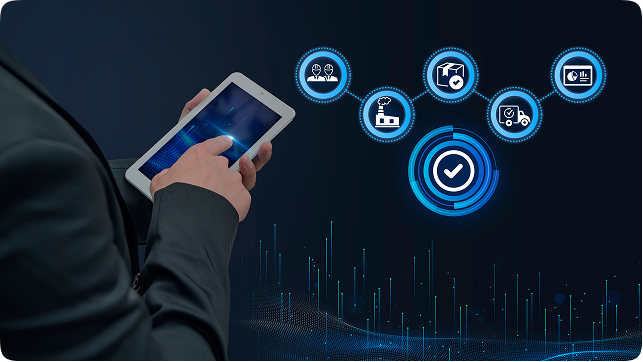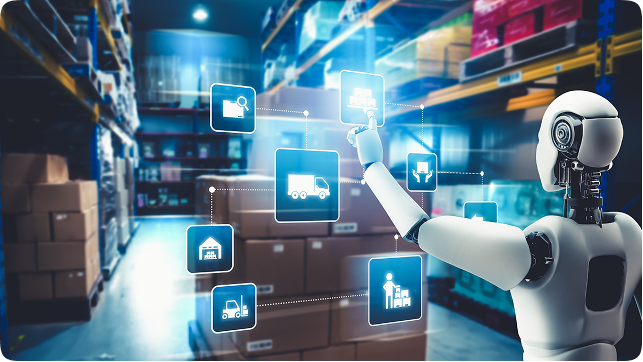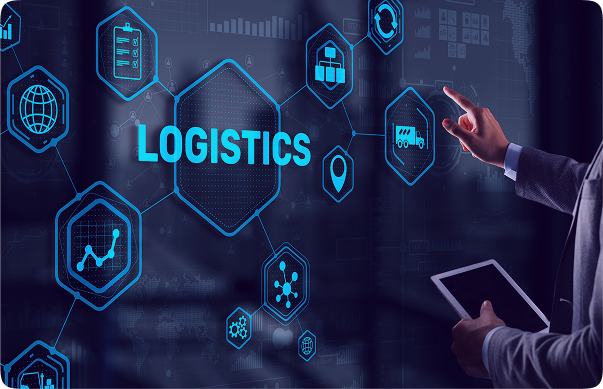Boosting Existing Logistics Systems with AI-Powered Data Extraction
As someone handling freight bills often, you know how quickly the costs stack up—detention here, a fuel surcharge there, and suddenly, your ‘base cost’ looks nothing like the final bill. Managing all this manually? It’s slow, stressful, and error-prone.
This is where Artificial Intelligence (AI) steps in, not to replace systems, but to make them faster and more accurate. AI extracts line-item data from invoices and supporting documents in seconds. Nothing slips through, whether it’s a surcharge or a mislabelled “tail lift service.”
The real power is evident when the extracted data seamlessly integrates into your LMS, WMS, or proprietary software. AI alone is like a sharp assistant with great notes, but without real-time integration, operations quickly disrupt. That’s why tackling integration challenges is critical for building a seamless, automated logistics ecosystem.
Challenges in Syncing AI Data to Operational Platforms
Difficulty Syncing Extracted Data with Existing Systems
What happens when your TMS can’t recognize a simple ‘tail lift service’ because another carrier calls it a ‘liftgate fee’? That’s where syncing headaches begin.
- Format incompatibility: AI outputs may not align with the formats required by Transportation Management Systems (TMS), Warehouse Management Systems (WMS), or accounting platforms.
- Lack of standardization: Variations in accessorial charges labelling can confuse systems. For instance, one document may list a Bill of Lading (BOL) while another refers to it as a Shipping Number, creating inconsistencies without proper mapping.
- Misallocation of charges: When terms aren’t standardized, charges risk being missed, misapplied, or recorded incorrectly, leading to billing disputes or revenue leakage.
Manual Import-Export Steps Slowing Processes
This reliance creates multiple bottlenecks, including- Spreadsheet dependency: Many organizations still use spreadsheets to move data, slowing down things that should be automated.
- Risk of human error: Every manual transfer introduces the possibility of mismatches, missing entries, or accidental overwrites, thus undermining the accuracy that AI provides at the start.

The Cost of Delayed and Disconnected Freight Data
In logistics, real-time data is critical for efficiency and accuracy. However, delayed or disconnected data flows create significant challenges, leading to lost visibility, increased costs, and operational inefficiencies.
When charge and payment updates lag in central systems, businesses lose the ability to track financial and operational performance accurately. Key issues include:
- Delayed Updates: Late posting of charges and payments disrupts financial reviews, making it challenging to assess profitability in real time.
- Poor Decision-Making: Without up-to-date data, managers lack the insights needed to optimize, adjust, or respond to changes quickly.
- Inaccurate Cost Reporting: Misclassified or delayed accessorial charges distort shipment cost analysis, leading to incorrect budgeting and forecasting.
Disconnected systems force teams to manually bridge gaps, increasing workload and the risk of errors. Common pain points include:
- Manual Data Transfers: Employees waste time transferring data between systems, which distracts them from focusing on strategic tasks.
- Duplicate Efforts & Corrections: Misclassified charges require rework, causing inefficiencies.
- Higher Labor Costs: More staff time is spent fixing errors rather than driving value-added activities.
Delayed and fragmented data flows disrupt both financial accuracy and operational agility. Investing in integrated, real-time data systems can eliminate these inefficiencies, reduce costs, and improve decision-making.
Seamless AI Integration with APIs for Real-Time Logistics Data
API-Based Integration for Direct Data Transfer
APIs (Application Programming Interfaces) are the digital bridges between systems. Think of APIs as express highways for your data. Instead of taking the long, bumpy manual road of exporting, cleaning, and importing spreadsheets, API integration gives you a straight lane.
With API-based integration, the AI extraction engine connects directly to your TMS, WMS, or ERP. Data flows in real time without human touchpoints. Base freight charges and other accessorial charges are automatically pushed into the right database modules. This not only ensures speed but also guarantees accuracy so that financial teams always see the most up-to-date figures.
APIs also reduce errors from duplicates or inconsistent uploads. They also create an audit-ready environment where every transaction is traceable. Real-time API integration transforms AI from a thoughtful add-on into a seamless extension of your workflow. Data captured by AI becomes immediately actionable, supporting faster billing cycles, improved cash flow, and better decision-making. This is where platforms like iCaptur stand out, offering API-ready AI extraction that plugs directly into your logistics systems, ensuring every charge, from base freight to accessorials, is captured, mapped, and reconciled without friction.
Custom Field Mapping for System Compatibility
No two carriers present invoices in the same way, and no two logistics systems capture data in identical formats. That’s where field mapping becomes critical.
AI-extracted values are matched to your organization’s standardized charge codes and system fields. This flexible mapping ensures alignment between carrier-specific terminology and your internal code structure.
For instance, one carrier might use “Liftgate Service” while another lists “Tailgate Assist.” Both can be mapped to a single standardized charge code defined within your organization’s internal system for consistency.
This flexibility guarantees accurate allocation, consistent reporting, and zero missed details regardless of how charges are labelled on paper.

Systems AI can Integrate With
Logistics runs on movement; your data shouldn’t be stuck behind walls.
For AI-driven invoice extraction to deliver its full value, it must integrate seamlessly with the core systems that run your supply chain. From managing freight costs to reconciling payments, system integration ensures that accurate, real-time data flows where it’s needed most. AI integration ensures data flows smoothly between systems without bottlenecks.
Logistics Management Systems (LMS)
AI-powered data extraction integrates seamlessly with LMS platforms, ensuring that freight cost data, shipment records, and accessorial charges are updated in real time. This centralization enables logistics managers to track actual shipment costs without delays, helping with faster decision-making.
Warehouse Management Systems (WMS)
When warehouse teams lack accurate cost allocation, it directly impacts profit margins. AI solves this by ensuring that all accessorial charges, such as unloading or handling fees, are appropriately reflected in WMS. This creates complete visibility into operational costs tied to inventory movement, helping warehouse managers handle expenses more precisely.
Accounting & Finance Platforms
Financial teams often struggle with misaligned charge data during reconciliations. AI solves this by pushing structured, validated data directly into accounting systems. As a result, payments align with actual invoices, reducing discrepancies and ensuring compliance with financial controls.
Custom In-House Applications
For companies with proprietary workflows, AI adapts with custom integrations. This flexibility allows organizations to maintain their unique processes while benefiting from automation. Whether it’s a homegrown TMS or a specialized financial platform, AI fits in without disruption.

What Seamless Integration Provides
Seamless integration means data doesn’t just move; it moves intelligently. By connecting the AI extraction engine directly into logistics, finance, or warehouse systems, companies can automate every step of invoice handling. From capturing base freight to identifying complex accessorial charges, information flows without the need for manual input. This ensures consistency, speed, and above all, accuracy.
End-to-End Automation Without Workflow Disruption
- Continuous data flow from extraction to processing without manual intervention
- No loss of charge detail, including accessorial, during transfer.
The real advantage is that automation fits into your existing processes instead of creating new workflows or forcing teams to adapt. Integration works silently in the background. Teams spend less time on manual entries and more time focusing on strategic work, all without disrupting day-to-day operations. That means no disruption to current operations, but a dramatic reduction in errors and time spent on repetitive tasks.
Centralized Invoice and Payment Visibility
- Unified view of billing data—base freight and accessorial charges—for faster audits, reconciliations, and reporting/li>
One of the biggest hurdles in logistics accounting is fragmented billing data. With seamless integration, all charges—whether base rates or accessorial fees–are captured and presented in a unified dashboard. This centralization provides finance and operations teams with complete visibility, eliminating the need to search across multiple systems.
The result? Faster audits, smoother reconciliations, and more accurate reporting. Teams can spot discrepancies early, validate charges against contracts, and gain a real-time understanding of overall freight spend. Teams gain a 360° perspective of freight spend, allowing leadership to make data-backed decisions with confidence.
Conclusion—From Standalone AI to Fully Embedded Intelligence
AI as a Core, Not a Side Tool
When AI operates as a standalone tool, its potential often remains underutilized. But once integrated into core logistics systems, it stops being just an assistant and becomes part of the decision-making fabric. This transformation means that every charge, whether base freight or accessorial, is captured, categorized, and reported without delays.
Long-term value:
- Speed
- Accuracy
- Visibility
- Faster reconciliations.
Integration ensures workflows remain intact while eliminating the inefficiencies of manual intervention
In essence, moving from isolated AI to fully embedded intelligence marks a shift from reactive problem-solving to proactive efficiency building. Fully embedded AI is the foundation for a future-ready logistics ecosystem.
Enhancing your workflow through
AI integration is key to future success.
processes and improve efficiency!
Navin Kumar Parthiban is a seasoned professional in the field of AI technologies and is a Director at iTech India. With a passion for innovation and a keen understanding of the ever-evolving landscape of artificial intelligence, Navin has played a pivotal role in driving iTech India’s success and technological advancements. Navin regularly shares his insights and knowledge through articles, seminars, and workshops. He believes in the power of AI to revolutionize industries and improve people’s lives, and he is dedicated to staying at the forefront of this rapidly evolving field.





